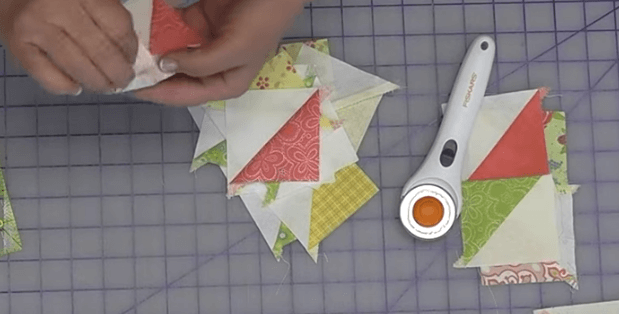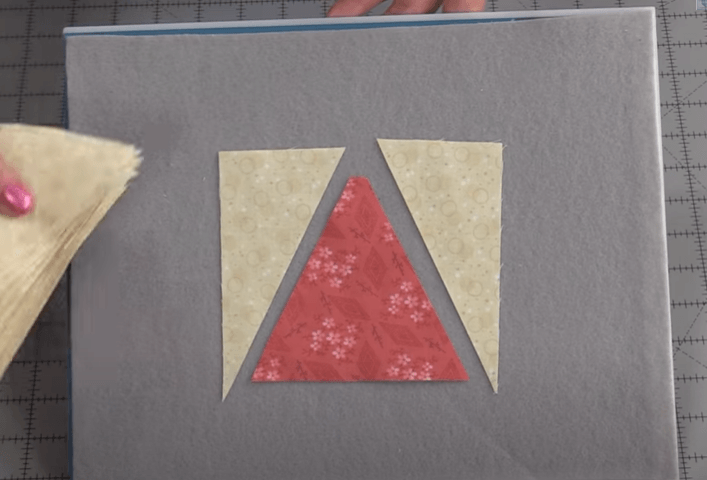No Stretch Bias Tips For Triangles

A Stabilizing Tip For Bias Stretch
Triangles can be result in a disappointing finish when your bias is stretched. The diagonal plus 7/8 inch method ensures the desired finished size of your triangle squares. However it requires drawing a diagonal on the square. The challenge is that the fabric moves while attempting to draw a diagonal line.
Two great tips that have proven over time. The first one is easy, using something you have right at home! Claudia Kavamme shared her success with American Patchwork and Quilting magazine
One method for making triangle-squares is to add 7⁄8″ to the desired finished size, cut two squares of fabric that size, and draw a diagonal line on the back of the lighter fabric square. To prevent the fabric from stretching as you draw the line, place the square on a rubber jar opener or the wrong side of a computer mouse pad. Then place the two squares with right sides together, and sew 1⁄4″ on each side of the line. Cut apart on drawn line.
You could also use a sandpaper board. It’s consists of a piece of board, a fine-grain sandpaper, and a layer of felt on top of it. You can make your own with an old clip board, sandpaper and felt. You can purchase one here.

Alternatively Omnigrid triangle rulers can be used. They used to create half-square triangles for finished quilt blocks up to 6” and 8”. It has seam allowance calculations included in the measurements and fairly easy to manipulate for smaller triangles when quilting.





